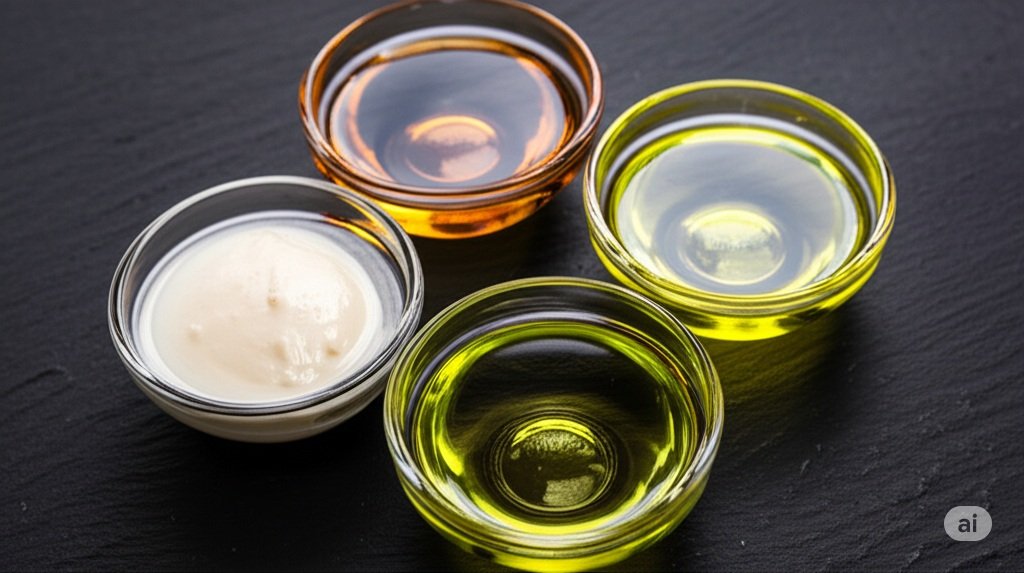The Best Healthy Cooking Oils for Your Indian Kitchen


Discover the healthiest cooking oils for Indian cuisine! Learn about their benefits, smoke points, and how to choose the right one for your dishes.
Choosing the right cooking oil is crucial for both the flavour and the health benefits of your food, especially in Indian cooking where frying, sautéing, and tempering are common techniques. With so many options available in the market, it can be confusing to decide which oil is the best for your needs. Let’s explore some of the healthiest cooking oils commonly used in Indian households.
Mustard Oil: A Spicy Choice
Mustard oil, with its pungent aroma and distinct flavour, is a staple in many Indian regional cuisines, particularly in the north and east. It’s rich in monounsaturated and polyunsaturated fatty acids, as well as alpha-linolenic acid (an omega-3 fatty acid). Mustard oil has a high smoke point, making it suitable for deep-frying and high-heat cooking methods often used in dishes like pakoras or sabzis. However, it’s important to ensure you are using pure mustard oil meant for consumption.
Ghee: The Traditional Favourite
Ghee, or clarified butter, holds a special place in Indian cooking and Ayurveda. It’s made by simmering butter and removing milk solids, resulting in a rich, nutty flavour and a high smoke point, ideal for sautéing, tempering (tadka), and even some frying. While traditionally considered healthy in moderation, it’s important to consume ghee judiciously as it is a saturated fat.
Coconut Oil: A Versatile Option
Coconut oil, especially virgin coconut oil, has gained popularity for its potential health benefits and unique flavour. It contains medium-chain triglycerides (MCTs), which are believed to be easily digested by the body. Coconut oil has a medium smoke point, making it suitable for stir-frying and some baking. Its distinct coconut flavour works well in South Indian dishes and certain vegetable preparations.
Groundnut Oil: The Neutral All-Rounder
Groundnut oil, also known as peanut oil, is a commonly used cooking oil in India due to its neutral flavour and high smoke point. This makes it a versatile option for various cooking methods, including deep-frying, sautéing, and stir-frying. It’s a good source of monounsaturated and polyunsaturated fats. Opt for cold-pressed or unrefined groundnut oil for potentially more health benefits.
Other Healthy Options to Consider
While the above are some of the most common, there are other healthy oils you can incorporate into your Indian cooking:
- Rice Bran Oil: Known for its high smoke point and neutral flavour, rich in antioxidants like oryzanol.
- Sesame Oil (Til ka Tel): Offers a nutty flavour and is good for stir-frying and flavouring dishes, especially in South Indian and East Asian-inspired recipes. Choose cold-pressed for better quality.
- Olive Oil (Extra Virgin): While not traditionally Indian, extra virgin olive oil can be used for low-heat cooking and as a finishing oil in some Indian salads or raitas for its healthy monounsaturated fats and antioxidants. Avoid using it for high-heat cooking due to its lower smoke point.
Ultimately, the “best” cooking oil depends on your specific dish, cooking method, and personal preferences. A good approach is to use a variety of healthy oils in moderation to reap the benefits of different nutrients and flavours. Remember to store your cooking oils in a cool, dark place to maintain their quality and prevent them from turning rancid.
Recent Posts
A Gang’s Chilling Warning to Bollywood after the Kapil Sharma Cafe Attack
A recent incident at actor-comedian Kapil Sharma’s cafe has sent a chilling message through the… Read More
Modi and Putin’s Crucial Talk: Strengthening Ties Amid Global Tensions
Narendra Modi and Russian President Vladimir Putin recently held an important conversation, reaffirming the strong… Read More
The Bull and Bear Tussle: How Trump’s Tariffs Are Shaking Up the Indian Stock Market
Indian stock markets are on edge after new US tariffs. Will the Nifty50 and Sensex… Read More
Hope Amidst the Uttarkashi Flash Floods: Families Await News
Anxious families in Uttarkashi wait for news after flash floods. Discover the ongoing rescue efforts… Read More
India’s Unwavering Pledge: Farmers’ Interests Paramount, Says PM Modi
The nation recently witnessed a strong and clear message from Prime Minister Narendra Modi regarding… Read More
Beyond Flavor: Unveiling the Healing Powers of Indian Spices
Indian cuisine is renowned worldwide for its vibrant flavors and aromatic spices. However, these culinary… Read More